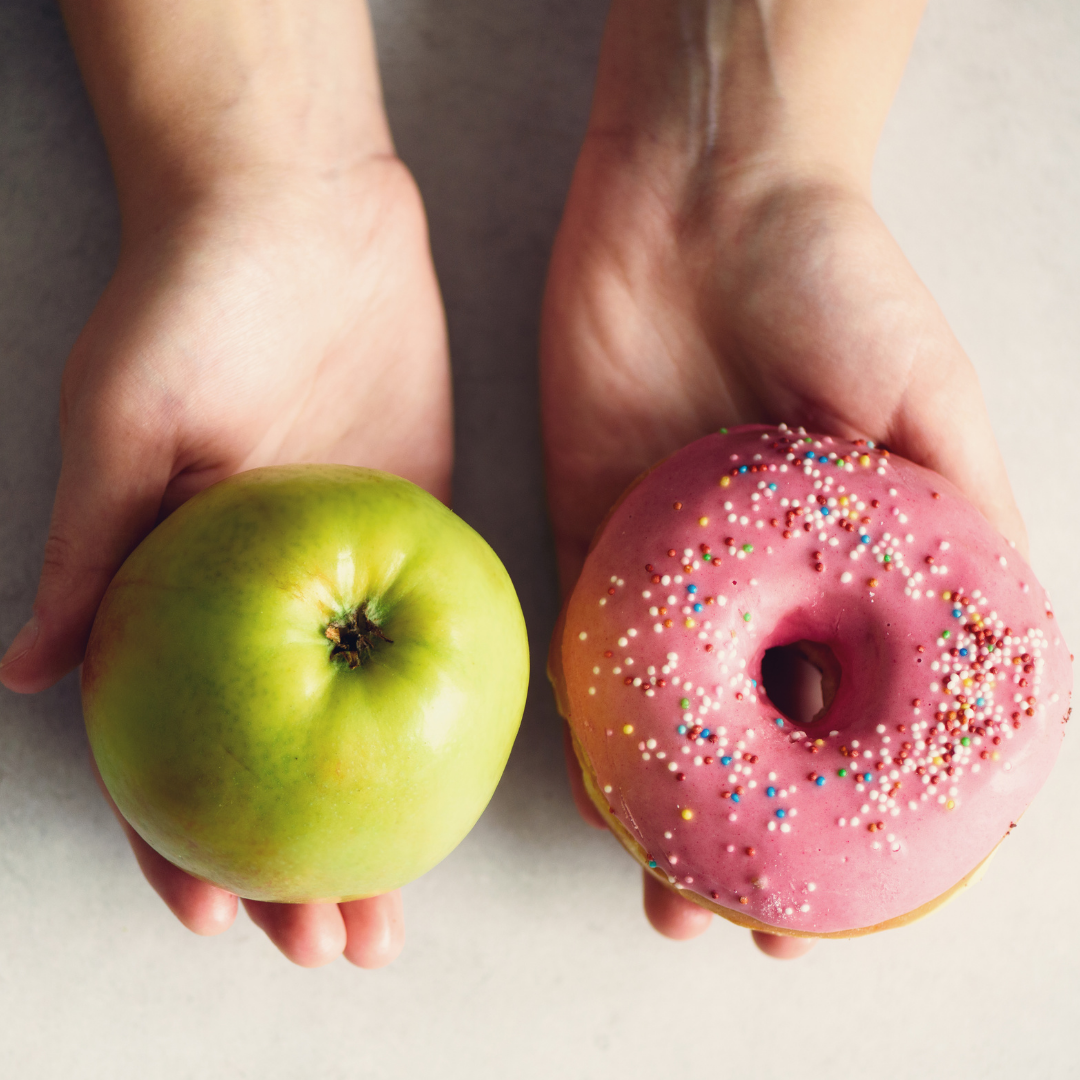
Related Posts

GRAINS: HEALTH FOOD OR POISON?
Related PostsGrains are...

A TURN TOWARD NATURE TO SOLVE THE “PROBLEMS” WITH MEAT
Related PostsWhat’s up...

PASS THE SALT
Related PostsSalt is in...

GOOD FAD, BAD FAD
Related PostsI recently...

CAN YOU EAT MEAT AND AVOID HEART DISEASE?
Related PostsIs eating...

THE “SAD” AMERICAN DIET
What is the more common culprit in rising obesity rates: excess consumption of fat, or excess carbohydrates? The debate between the low-carb high-fat and the low-fat camps is complex and ongoing. Meanwhile, many people following the Standard American Diet (SAD) are deficient in dietary protein, which causes us to eat more calories overall–as fat or carbohydrates. (The protein leverage hypothesis shows that we eat to prioritize getting enough protein, regardless of overall calorie needs.)
A healthy protein intake should average 20% of calories, or more if you are working to build muscle mass (see my recent post on the importance of building muscle as we age). But dietary protein has been steadily falling in the US. In 1961, Americans consumed 14% of our total caloric energy from protein. In 2000, protein was down to 12.5% of calories. Meanwhile, our total energy intake (calories) has increased 10%.
Over the past few decades, another change to the standard American diet has been happening: the mass production and marketing of ultra-processed foods. Americans’ consumption of ultra-processed foods has skyrocketed and currently represents 60% of all the calories consumed in the US. Because ultra-processed food, on average, has half the protein content of minimally processed, whole foods, protein intake is falling further with the rise of processed food in our diets.
This study in Public Health Nutrition shows that as the percentage of calories from processed food goes up, the amount of protein in our diets goes down, and the number of calories we consume goes up.
What are processed and ultra-processed foods?
Almost all of the food we eat is processed to some degree, often to make these foods edible. Cooking a vegetable, turning milk into cheese, or baking whole wheat flour into bread is processing. Some processed foods without excessive additives are simply packaged for convenience and remain minimally altered, such as canned fish, frozen peas, pasteurized milk, or canned beans. Processed foods are also many packaged items you find in the grocery store’s middle aisles. These items have been altered, sometimes in ways that are not ideal for your health, depending on the amount of added sugar, salt, preservatives, or oil.
Close to 60% of Americans’ calories come from ultra-processed foods. These products go through multiple processes (extrusion, molding, milling, etc.), contain many added, even artificial ingredients and preservatives, are highly manipulated, and are depleted of protein and fiber. Ultra-processed foods you’ve probably consumed include white bread, soft drinks, chips, candy, ice cream, sweetened breakfast cereals, packaged soups, chicken nuggets, hot dogs, fries, sweetened coffee and energy drinks, granola bars, and frozen meals. Typically, ultra-processed foods are industrially processed with many, often unrecognizable ingredients. Ultra-processed foods also characteristically are high in both fat and sugar (often in the form of industrially produced seed oils and high fructose corn syrup), which are rarely present in natural whole foods.
The dangers of processed foods
One way that ultra-processed food makes us less healthy is by diluting the protein out of our diets. These foods are high on the glycemic index (GI), a measure of how much a food will impact blood sugar. The higher the GI, the less satiated that food will make you feel.
The weight we gain from eating ultra-processed foods doesn’t just make our jeans tighter. It means increased visceral and epicardial fat, causes inflammation, and damages our heart and blood vessels. Diets characterized by high glycemic foods carry a 25% increased risk of cardiovascular disease and death.
Both heart disease prevalence and ultra-processed food consumption are both disproportionately high in low-income households and neighborhoods with less access to affordable, whole foods, known as food apartheid. This isn’t a problem just for certain cities; lack of access to fresh, real foods impacts our whole society.
The convenience and cost lies
Why is there so much ultra-processed food available in the standard American diet? Because there is a lot of money to be made. Relentless and glitzy marketing campaigns increase our appetite for ultra-processed foods, particularly for the most vulnerable, our children.
The food industry’s money has influenced nutrition education and scientific research resulting in biased and at times fraudulent results. For instance, the perception that ultra-processed food is cheap is an illusion created by deferring the $150 billion cost of medical care for the resulting increased diabetes and heart disease. Not to mention the over $1 trillion cost of managing chronic disease.
Marketing has also convinced an entire culture that we are too busy to cook. In Michael Pollan’s excellent book, Cooked: A Natural History of Transformation, he describes his family’s experiment comparing the time investment in microwaving versus cooking a family meal. In the same time that everyone could sequentially microwave their prepackaged choices, a real meal could be prepared for the whole family. The sequential heating also meant that his family did not eat at the same time, destroying the community experience.
Government subsidies of monoculture crops like soy and corn also support the illusion of ultra-processed foods being convenient and affordable. We unequivocally support making food affordable, so let’s start subsidizing real, whole foods. Studies in Brazil have identified that the consumption of ultra-processed is definitely price sensitive. In Brazil, and in contrast to the US, dietary guidelines treat processed foods as the most important issue in public health.
Ultra-processed foods are nothing but trouble. They displace protein and fiber from our diets and increase obesity, metabolic dysfunction, and heart disease. Ultra-processed food has addictive characteristics (fat plus sugar), and it is obscenely marketed to our children and less affluent economic groups.
The healthy processed food lie
If you ever shop at Whole Foods, take a look at some of the baskets customers bring to check out. There may not be any real food in the whole cart. A large portion of the inner aisles of health food stores like these are filled with processed and ultra-processed foods. Neither potato chips made with sea salt nor chips made with kale and canola oil processed at temperature are really a whole food. A muffin made with almond flour, oil, and sweetener is still a carb-oil combination guaranteed to spike your insulin and your blood sugar. “Healthy processed foods” are another source of oxidized omega-6 oils that you should minimize.
Think beyond macronutrients
One way of thinking about the healthfulness of foods is less in terms of carbs, fat, and protein (the three macronutrients) and more in terms of the degree of processing. If it’s not a food you could make from scratch at home, it’s ultra-processed.
Cutting back on processed foods means cooking more, and I don’t mean throwing something in the microwave. Cooking and eating as a family is an opportunity to bring mindfulness to the experience. I personally can’t wait to be able to bring more family friends into our home to share real food and real conversation. For some tips on getting started with cooking at home, check out Beth’s recent blog post on the topic.
Eliminating ultra-processed foods from your diet is critical, but it should go beyond a personal choice. We need to reduce the exposure of processed food marketing to our families and decrease the penetration of processed food into the diet of our entire society.
Fighting the government, the food industry, and culture seems like a daunting task. What are your thoughts? Where do you think we should go from here? What examples of the good fight have you seen in your community?
Ready for a new relationship with food? Sign up for our monthly community fasts. Details on our Events page.
